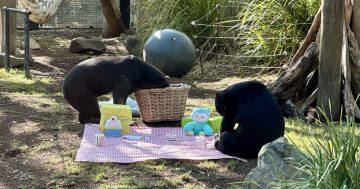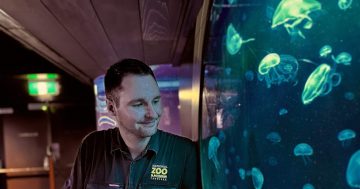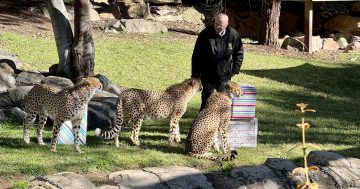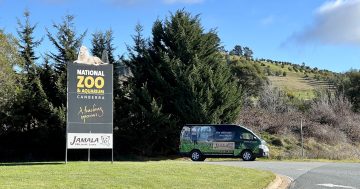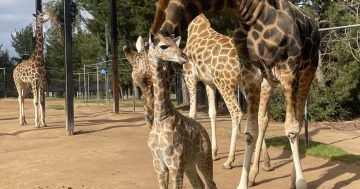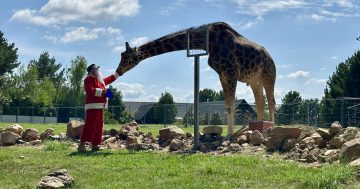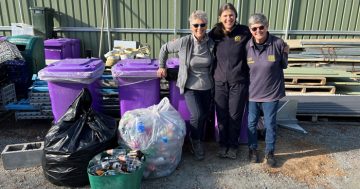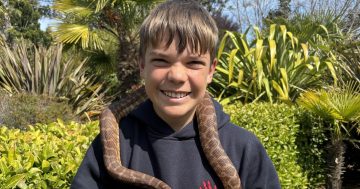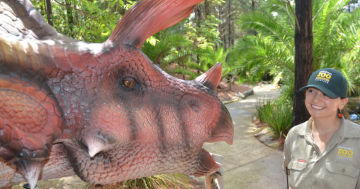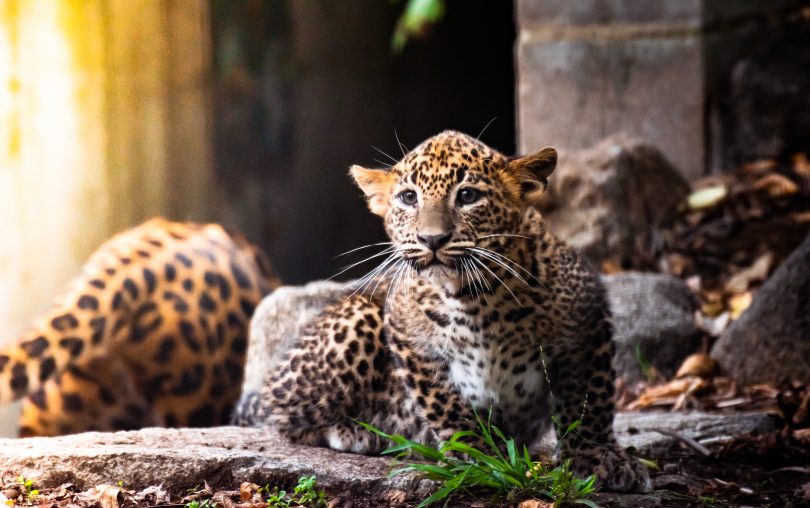
One of the Sri Lankan leopard cubs that was born in December 2020 at the National Zoo & Aquarium. Photo: National Zoo & Aquarium.
Canberra is on the map as the first place in the world to breed Sri Lankan leopards, and the new cubs are now open to receiving visitors at the National Zoo & Aquarium.
The two males were actually born seven months ago, on 24 December, 2020, but have mostly been hiding away in their underground dens. Only the incredibly lucky and eagle-eyed would have spotted them since then.
National Zoo & Aquarium’s senior wildlife keeper, Katie Ness, describes it as “a wonderful Christmas present for us”.
“We’ve only just announced them now because they weren’t reliably visible to the public,” she says. “Now that they’re older and a lot more confident out in the yard, more people will be able to see them.
“But like any leopard, they are an elusive animal so sometimes you do have to look quite closely to spot them.”
The first one is named Asanka, meaning ‘fearless’.
“He is definitely a very confident boy,” says Katie.
The second leopard cub is Chatura, which means ‘clever’.
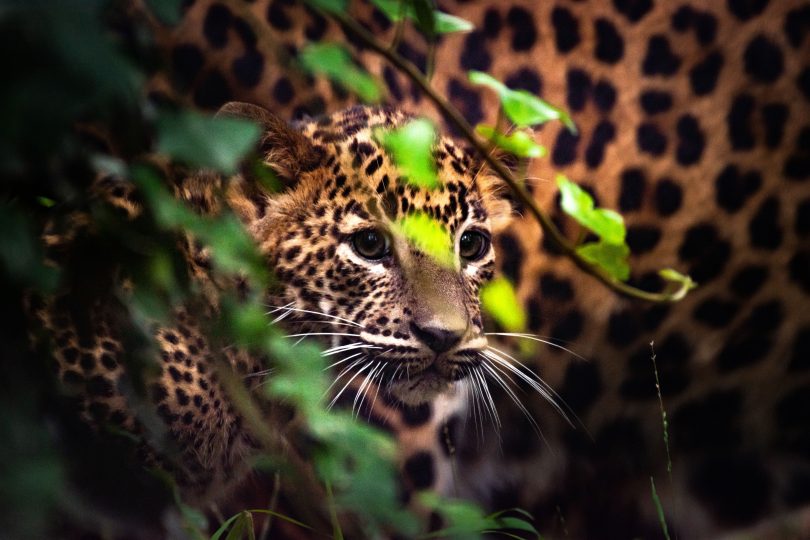
The National Zoo & Aquarium is the only place in Australia that breeds Sri Lankan leopards. Photo: National Zoo & Aquarium
Leopards are the smallest of the ‘big cats’ with long, lithe bodies, stocky legs and big paws. A tawny-yellow coat of fur marked with dark spots and rosettes characterises the species, and much like a fingerprint, no two of the animal’s markings are the same.
A litter usually consists of two cubs.
They are at the top of the food chain in Sri Lanka, but fewer than 900 of them exist in the wild due to a mix of poaching, habitat loss and persecution – well and truly placing them into the endangered category.
Fewer than 80 Sri Lankan leopards are held in captivity around the world.
“We’re the only ones in Australia who hold them, and the first ones in Australia to breed them,” says Katie. “So it’s super exciting for us and a big achievement.”
The cubs were born in a nesting box within the enclosure’s underground den system.
“They stayed in there for the first couple of weeks because when they’re first born, they’re not able to move around,” says Katie. “It took them probably about 10 days for their eyes to open and for them to begin walking. They’re quite helpless when they’re first born.”
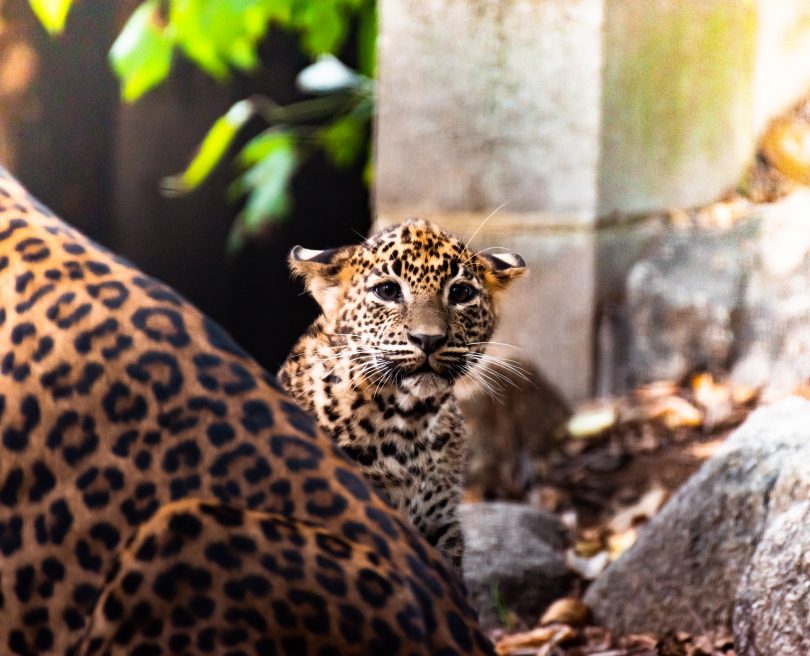
Sri Lankan leopards are an endangered species, with just approximately 900 in existence. Photo: National Zoo & Aquarium.
At the moment, the two boys weigh approximately 27kg each.
“Being young boys, they are still a bit chunky but they’ll grow into themselves,” says Katie. “They go through growth spurts each week and we expect them to get to almost 50kg like their dad is.
“It doesn’t take as much food as you might think to feed the growing cubs.”
The cubs are fed once a day with 1.3kg of meat, or “the same amount as mum”. Much like young human males, they have a rapid metabolism.
Both parents live together full-time so Katie says it’s more than likely there’ll be more cubs down the track.
The father, Ankesh, originates from Spain, and the mother, Yakalla, from France. Both came to the zoo in 2019, a few months apart.
“Initial introductions were great and they get along really well,” says Katie.
Wild leopards are a solitary species, living and hunting on their own, but Katie says both Ankesh and Yakalla came from a group situation so it’s quite normal for them to live as a family unit.
Katie hopes their cute and active offspring will bring more people to the zoo.
“Obviously with the COVID-19 situation going on at the moment, numbers of visitors are down, especially those from interstate,” she says.
The National Zoo & Aquarium is open every day from 9:30 am to 5:00 pm, except for Christmas Day.












